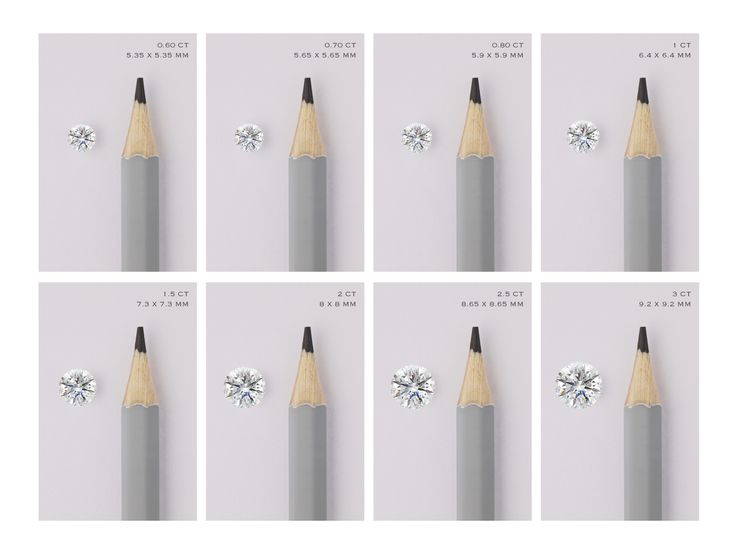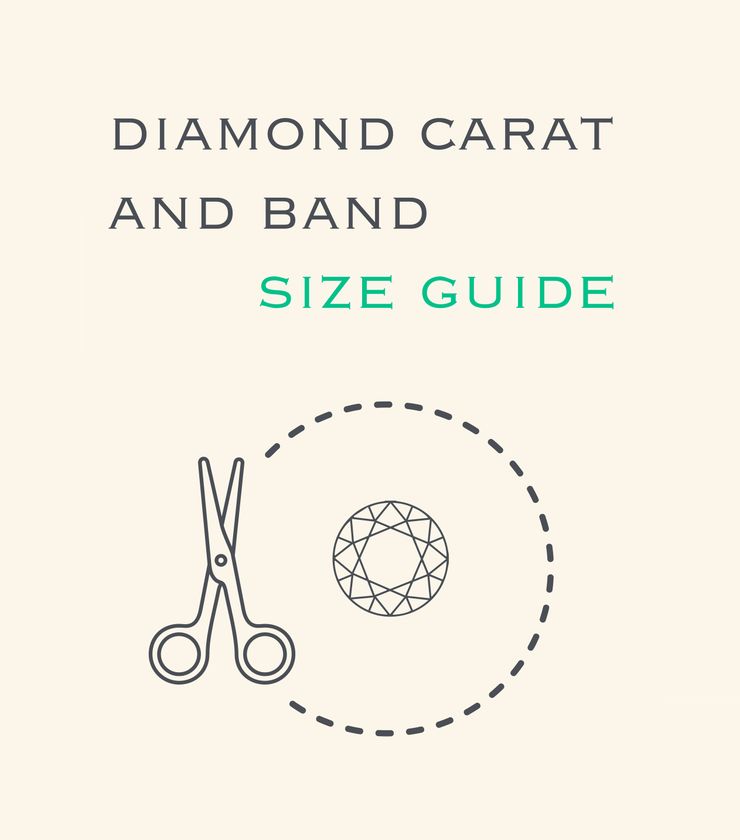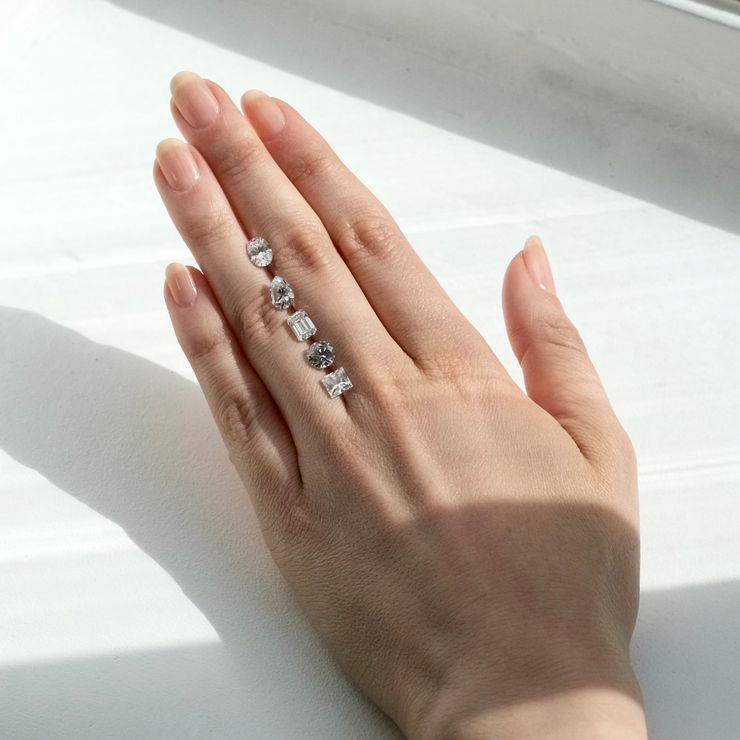Try our printable diamond carat and band size guide
Want to see what different carat weights, diamond shapes, and band widths look like on your hand? Download and print this PDF and you’ll be able to cut out to-scale outlines of virtually every diamond size and shape. You can mix and match them on different ring band sizes to get a better idea of what your ring will look like in real life.



